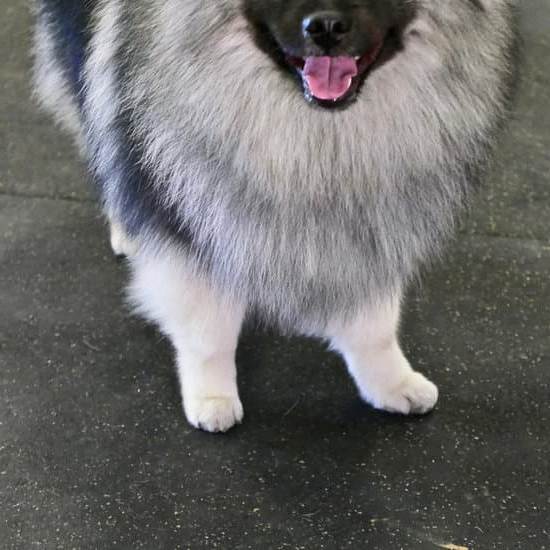Are you tired of your furry friend turning a car ride into a stressful and chaotic experience? If so, you are not alone. Many dog owners face the challenge of traveling in the car with their canine companions.
However, with the right training and preparation, car travel with your dog can be an enjoyable and stress-free experience for everyone involved. In this article, we will explore tips and techniques on how to train your dog in the car, ensuring that both you and your pet have a safe and pleasant journey.
Training your dog to behave appropriately in the car is not only important for your convenience but also for their safety. Dogs that are anxious or unruly in the car pose a risk to themselves as well as to the driver and passengers. By taking the time to properly train your dog for car travel, you can create a positive and safe environment for everyone.
In the following sections, we will discuss various aspects of training your dog in the car, from preparing them for travel to addressing anxiety and motion sickness. We will provide step-by-step guides, tips for establishing positive associations with the car, safety measures, basic commands for calm behavior, gradual exposure techniques, troubleshooting common challenges, and advanced training techniques for long road trips or multiple dogs.
By implementing these strategies, you can ensure that your dog becomes a well-behaved and relaxed travel companion.
Preparing Your Dog for Car Travel
When it comes to getting your dog ready for car travel, preparation is key. The first step is to ensure that your dog is comfortable being in the car. Start by taking short rides around the block and gradually increase the duration as your dog becomes more at ease. It’s also important to keep in mind that some dogs may experience anxiety or motion sickness in the car, so it’s best to introduce positive associations early on.
Another tip for preparing your dog for car travel is to create a safe and secure environment inside the vehicle. Use a crate or a harness to restrain your dog, preventing them from moving around freely and potentially causing distractions while you’re driving. Make sure that the space within the vehicle is well-ventilated and comfortable for your furry friend.
In addition, it’s essential to make frequent stops, especially during long road trips. This will give your dog an opportunity to stretch their legs, go potty, and get some fresh air. By incorporating these tips and tricks into your training routine, you can help ensure that your dog feels relaxed and at ease during car travel.
| Tips | Tricks |
|---|---|
| Gradually increase ride duration | Create a safe environment with crate/harness |
| Introduce positive associations with car travel | Make frequent stops during long road trips |
Establishing a Positive Association With the Car
First, start by introducing your dog to the car in a gradual and gentle manner. Begin by simply sitting with your dog in the parked car with the engine off. Bring along some of your dog’s favorite toys or treats to create a positive association with being inside the vehicle.
Once your dog is comfortable spending time inside the stationary car, gradually progress to short drives around the block. Keep these initial car rides brief and end them on a positive note, such as with a rewarding treat or playtime at home. Over time, gradually increase the duration of these trips to help your dog build up confidence and comfort in the car.
Continue reinforcing positive associations by incorporating fun activities into your car trips, such as going to a park or taking your dog for a walk in new and exciting locations. By associating the car with enjoyable experiences, you can help your dog overcome any fear or anxiety they may have initially had about traveling in the car. With patience and consistent training, you can establish a positive connection between your dog and car travel.
Safety Measures for Traveling With Your Dog in the Car
When it comes to traveling with your dog in the car, safety should be a top priority. One of the most important safety measures is to use a secure and comfortable restraint system for your dog.
This can include a well-fitted harness that attaches to a seat belt or a crate that is properly secured in the car. In the event of an accident or sudden stop, these restraints can prevent your dog from being injured or causing harm to others in the car.
Another crucial safety measure is never leaving your dog unattended in a parked car, especially in extreme temperatures. Even on mild days, temperatures inside a parked car can quickly reach dangerous levels, leading to heatstroke or hypothermia. If you need to leave your dog alone in the car for any reason, it’s best to have someone stay with them or opt for pet-friendly locations where they can accompany you.
Proper ventilation is also essential for your dog’s safety during car travel. Ensure that they have access to fresh air by cracking open windows or using climate control settings to maintain a comfortable temperature inside the vehicle. Additionally, be mindful of potential hazards in the vehicle such as loose items that could injure your dog during sudden stops or sharp turns.
| Safety Measure | Explanation |
|---|---|
| Restraint System | Use a secure harness or crate when traveling with your dog. |
| Never Leave Unattended | Avoid leaving your dog alone in a parked car, especially in extreme temperatures. |
| Proper Ventilation | Ensure fresh air and a comfortable temperature inside the vehicle. |
Addressing Anxiety and Motion Sickness in Dogs
Recognizing Anxiety and Motion Sickness
Before addressing anxiety and motion sickness in dogs, it is important to recognize the signs of these issues. Anxiety may manifest as excessive panting, whining, pacing, trembling, or drooling. Some dogs may also exhibit destructive behavior or attempt to escape from the car. Motion sickness, on the other hand, can lead to vomiting, drooling, listlessness, or restlessness during car rides.
Gradual Exposure and Desensitization
One effective way to address anxiety and motion sickness in dogs is through gradual exposure and desensitization techniques. Start by simply sitting in the parked car with your dog for a few minutes each day, gradually increasing the time spent inside.
Once your dog seems comfortable with this step, you can move on to short drives around the block, then gradually extend the duration of the car rides. This gradual approach helps your dog associate the car with positive experiences rather than fear or discomfort.
Consulting a Professional
If your dog continues to experience anxiety or motion sickness despite your efforts to train them for car travel, it may be beneficial to consult a professional dog trainer or veterinarian. They can provide personalized guidance and recommendations based on your dog’s specific needs and behaviors.
In some cases, they may also suggest medication or supplements to help alleviate anxiety or motion sickness during car rides. It’s important not to dismiss these issues as simply behavioral problems – seeking professional advice can make a significant difference in helping your dog feel more comfortable and secure during car travel.
Basic Commands for Calm Behavior in the Car
Training your dog to behave calmly in the car is essential for a safe and enjoyable travel experience. Teaching your furry friend basic commands for the car can make car rides less stressful for both you and your pet. Here are some basic commands that can help your dog maintain calm behavior in the car:
- Sit: Teaching your dog to sit on command can prevent them from moving around or jumping while the car is in motion. Use treats and positive reinforcement to encourage your dog to sit in the car.
- Stay: Training your dog to stay in one spot in the car can help prevent them from getting into unsafe situations, such as trying to climb into the front seat or sticking their head out of the window.
- Settle: The settle command can be used to encourage your dog to relax and remain calm during a car ride. Consistent training and rewards will help your pet associate settling down with positive experiences in the car.
In addition to these basic commands, it’s important to practice these commands in different scenarios such as short drives around the neighborhood before attempting longer trips. Consistency and patience are key when training your dog, so be sure to reinforce these commands regularly both inside and outside of the car.
Remember, every dog is unique, so it’s important to tailor your training approach based on your pet’s individual needs and behaviors. By training them to respond positively to basic commands, you’ll be setting the foundation for a successful and enjoyable travel experience with your furry companion by your side.
Gradual Exposure and Desensitization Techniques
When it comes to training your dog for car travel, gradual exposure and desensitization techniques are crucial for helping your dog become comfortable and relaxed in the car. Here are some helpful tips to successfully implement these techniques:
- Start with short, positive experiences: Begin by allowing your dog to explore the car while it is parked in a safe and familiar environment. Encourage your dog to get inside the car by using treats, toys, or their favorite blanket. Keep the initial sessions short and always end on a positive note.
- Progress to short drives: Once your dog is comfortable spending time in the car while it’s parked, gradually progress to short drives around the block or to a nearby park. Make sure to keep the experience positive by offering treats and praise throughout the drive.
- Monitor your dog’s behavior: Pay close attention to your dog’s body language and behavior during each exposure. Look for signs of stress or anxiety such as panting, pacing, drooling, or whining. If you notice any signs of discomfort, stop the session and go back to the previous step before trying again.
By gradually exposing your dog to the car and desensitizing them to potential stressors associated with car travel, you can help build their confidence and create a positive association with being in the car. This process may take time and patience, but with consistent practice, most dogs can learn to enjoy traveling in a vehicle.
Troubleshooting
Common Challenges When Training Your Dog in the Car
Training your dog to behave well in the car can come with its own set of challenges. Some common challenges you may encounter include anxiety, fear, excessive barking, whining, restlessness, and even motion sickness. It’s important to recognize that these challenges are normal and can be addressed with patience and the right training techniques.
Solutions for Common Challenges
To address these common challenges, it’s essential to start by identifying the root cause of your dog’s discomfort or behavior in the car. For example, if your dog experiences anxiety or fear in the car, you may need to work on establishing a positive association with the car (as discussed in a previous section) or consider desensitization techniques.
If your dog struggles with motion sickness, consulting with a veterinarian for potential solutions such as medication or natural remedies may be necessary. For restlessness and excessive barking, implementing basic commands for calm behavior can make a significant difference.
Consistency and Patience
Regardless of the specific challenges you may face when training your dog in the car, consistency and patience are key. It’s important to remain calm and composed during training sessions and not to show frustration if progress is slow. Keep in mind that each dog is unique, so what works for one dog may not work for another. By staying consistent with training methods and providing positive reinforcement, you can tackle these common challenges effectively.
Advanced Training Techniques for Long Road Trips and Traveling With Multiple Dogs
In conclusion, training your dog for car travel is an important aspect of responsible pet ownership. By following the tips and techniques outlined in this article, you can help ensure that your furry companion is well-prepared and comfortable when traveling in a car. Whether it’s a short trip to the vet or a long road trip, proper training can make the experience more enjoyable for both you and your dog.
Preparing your dog for long road trips and traveling with multiple dogs may require advanced training techniques. This could include practicing longer periods of time in the car, teaching multiple dogs to behave calmly together, or addressing any specific challenges that arise during extended travel. By utilizing gradual exposure, desensitization techniques, and positive reinforcement, you can help your dogs become confident and well-behaved travelers.
It’s important to remember that every dog is unique, so patience and consistency are key when implementing advanced training techniques. Additionally, seeking professional guidance from a certified dog trainer may be beneficial if you encounter specific challenges or if you’re planning extensive travel with your canine companions. With dedication and the right approach, you can ensure that your dogs are well-trained and comfortable passengers on any car journey.
Frequently Asked Questions
How Do I Train My Dog to Be Good in the Car?
Training your dog to be good in the car starts with getting them used to being inside it while it’s not moving. Start by letting your dog explore the car, rewarding them for calm behavior. Gradually work up to short rides, always using positive reinforcement and keeping the experience as stress-free as possible.
How Can I Calm My Dogs Anxiety in the Car?
Calming your dog’s anxiety in the car can involve desensitization techniques, such as playing calming music, using pheromone sprays, or introducing a comfortable crate or seat harness they associate with safety and relaxation. You can also consult with a professional trainer for additional guidance and support.
How Do You Calm a Dog From Panting in the Car?
To calm a dog from panting in the car, start by making sure they are comfortable with the temperature inside the vehicle and have access to fresh air. Utilize calming techniques like massage or gentle reassurance, and ensure there are distractions available such as toys or treats that can redirect their focus away from panting.
Gradually acclimate them to car rides if the panting persists.

Welcome to the blog! I am a professional dog trainer and have been working with dogs for many years. In this blog, I will be discussing various topics related to dog training, including tips, tricks, and advice. I hope you find this information helpful and informative. Thanks for reading!





